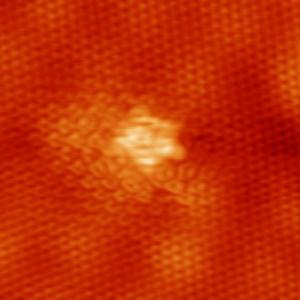
Researchers, high-tech firms, and manufacturers around the world have big hopes for the extraordinary material known as graphene. Just last year, the material earned researchers a Nobel Prize but it is already the focus of much work in both academia and the corporate world. According to a new feature article published on BBC's site, some 3,000 research papers have covered the topic to date with about 200 companies and startups involved in graphene-related research.
Graphene's potential is owed in part to the fact that it is said to be the strongest known material. Mechanical engineering professor James Hone at Columbia University said the following of its strength:
"Our research establishes graphene as the strongest material ever measured, some 200 times stronger than structural steel. [...] It would take an elephant, balanced on a pencil, to break through a sheet of graphene the thickness of Saran Wrap."
Graphene's exceptional strength is coupled with unparalleled conductivity, giving many high hopes that it will replace silicon-based technology, shrinking the size of electronic devices while opening the door to enormous design flexibility. In an interview with Technology Review last year, Professor James Tour of Rice University commented on the potential, saying that using graphene technology, "You could theoreticaly roll up your iPhone and stick it behind your ear like a pencil."
The BBC article reports that Samsung is one of the biggest known investors in graphene research and has already deomnstrated a 25-inch flexible touchscreen made with graphene. The company hopes to have a number of graphene-enabled products on the market in the next five years, the BBC reports.
The question still remains, however, whether graphene's amazing qualities will really produce the host of applications it seems to promise. Despite IBM's success in creating a 150 GHz transistor (compared to the fastest silcon device, which clocks in at 40 GHz), the reports cites caution on the part of IBM:
"We feel that it's rather difficult to imagine graphene as a replacement to silicon," says Dr Phaedon Avouris, of IBM."The material itself does not have a band gap, an essential property [meaning that graphene cannot stop conducting and be 'switched off', making it unusable in this way]. The applications of graphene and the application of silicon are in different domains."
Only time will tell whether the promise of graphene will hold, but until then, it's a particularly exciting material to keep an eye on. If you'd like to read more about graphene, see the article from Nature News that was published earlier this year and the interview with Andre Geim, who won a Nobel Prize in physics for graphene with his colleague Konstantin Novoselov.


